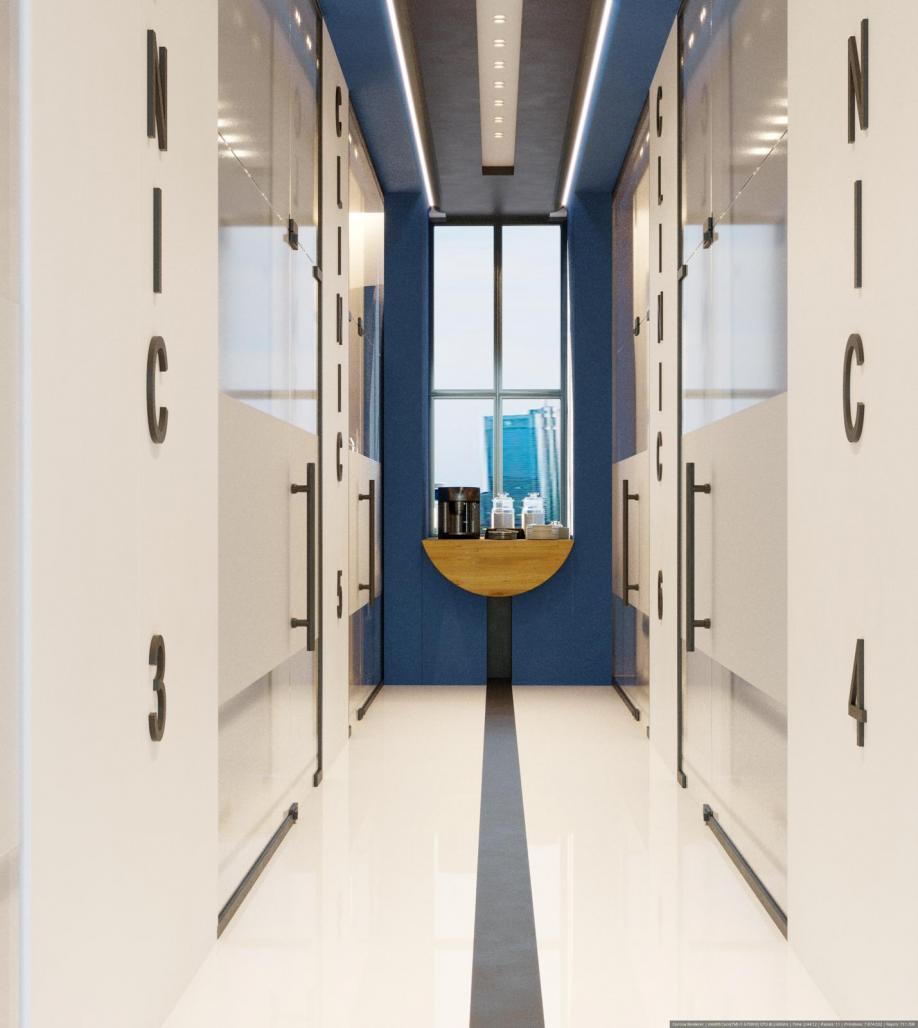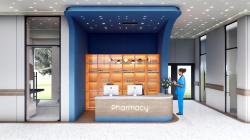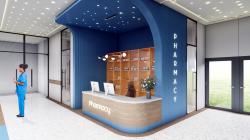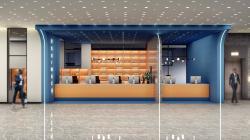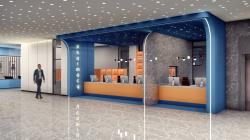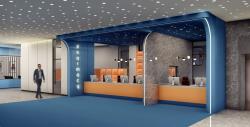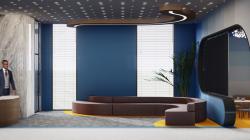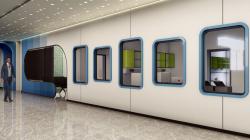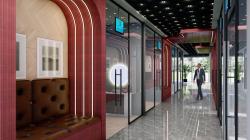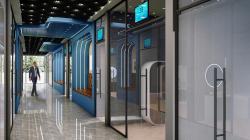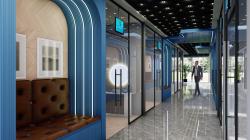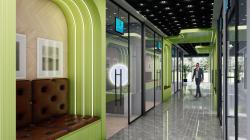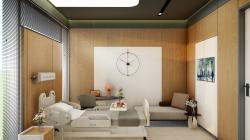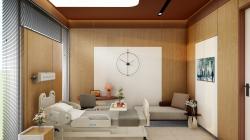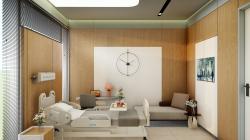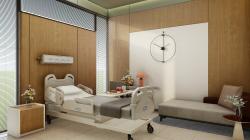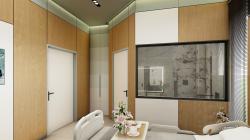There are basically 3 types of spaces in the hospital, 1-main circulation corridors (they were open public spaces for all people), 2-semi-open spaces (semi-open spaces that open towards the corridor such as pharmacy, reception, waiting areas, nurse station, they are not completely closed spaces). ), 3-indoor spaces (they are independent spaces separated from other spaces by a door such as patient room, operating room, consultation room). All of these different places come together to serve a single purpose: to restore the comfort of their previous life to people who have lost their health. If these different spaces can be related to each other, if they can all speak the same design language in different ways, a successful hospital design will be achieved. In order to achieve this aim in the project, we tried to define a design language that was reproduced according to its own context created by the hospital plans, instead of taking the previous ready-made designs and copying them here. In the wing where the polyclinics are located on the ground floor, seating pockets are designed along the corridor. These seating areas are handled as a niche in the corridor, emphasizing themselves. Continuing on the ceiling towards the corridor, the niches move towards the ceiling through the arch. In the corridor in the casualty wing, the triangular nursery station also defines the space with a triangular surface towards the ceiling. The pharmacy here, like the sitting niches, continues towards the ceiling, emphasizing the function of the pharmacy in the space.
2022
11 000 sqm area,
150 patient bed capacity
Selim Senin
Cemil Pamukcu
Mehmet Bikec
Alev Doru
Dilek Arik
Busra Solmaz
